The Heritage of Tasmania: Southern Region

This post is derived from "The Heritage of Tasmania; The Illustrated Register of the National Estate" (Macmillan, Melbourne 1983)
The Tasmanian National Trust Heritage list has been 'rescinded' by the State Government, so on these pages I have started to reconstruct it.

1. Southern Region of Tasmania
- Bothwell (earlier page)
- Brighton (earlier page)
- Bruny (earlier page)
- Clarence (previous page)
- Esperance and Huon Valley (this page)
- 32 Properties originally Listed by the Tasmanian National Trust (1976)
- then 165 properties listed by the Australian Heritage Places Inventory for the Huon valley,grouped by township below:
- Cygnet: 7 of National Heritage, + 8 of Local Heritage
- Dover: 6 of Local Heritage
- Franklin: 3 of National Heritage, + 40 of Local Heritage, + 3 no longer listed
- Continued on this next page
- Geeveston
- Huonville
- Lower Longley to Lucaston and Glen Huon
- Lune River
- Port Huon
- Ranelagh
- Southport
- Cockle Creek
- Strathgordon
 |
| Huon Local Government Area |
Huon Valley Council
(Macquarie Island not shown on map)
As part of the reorganisation of local government in Tasmania Esperance was amalgamated with Huon and Port Cygnet to form the new municipality of Huon Valley.
The Huon Valley Council is a local government area ofTasmania. It is the southernmost local government area inAustralia.
- It encompasses the town of Huonville, on the Huon River, some surrounding towns, and many protected areas and forestry plantations. The Tahune Airwalk is also in the area, located near the township ofGeeveston.
- In 1993 the Municipalities of Esperance, Huon and Port Cygnet were amalgamated to form the Huon Valley Council.
- Remote subantarctic Macquarie Island, which is located some 1400 km southeast of Tasmania proper, was part of Esperance until then, and has been part of Huon Valley since then.
- The eight towns are Cygnet, Dover (on Esperance Bay), Franklin, Geeveston, Glen Huon,Huonville, Port Huon, and Southport.
Huon Valley Heritage
"There are many buildings that are recognised as being of significance from a State and local heritage perspective within the Huon Municipal area.- The Australian Heritage Places Inventory lists 165 sites and artefacts in the municipal area.
- Of these, there are 124 buildings or artefacts and these are located in the following areas:"
- Cygnet, Pelverata and Garden Island Creek (15)
- Dover and Police Point (7)
- Franklin (43)
- Geeveston and Port Huon (14)
- Huonville and Ranelagh (21)
- Lower Longley to Lucaston and Glen Huon (17)
- Southport and Lune River (7)"
History of the Huon Valley Area
Located on the Huon River 39 km southwest of Hobart, Huonville is a small but thriving community serving the surrounding apple, timber and hops industries. Although it is relatively small Huonville is recognised as the major centre in the Huon Valley.
- The Huon River was first explored by the French Admiral, Bruni D'Entrecasteaux, who named it, a nearby island, a soft pine and the Kermandie River, after the commander of his support vessel, L'Esperance, Captain Huon de Kermadec.
- The name of the Huon is derived from Jean-Michel Huon de Kermadec, an 18th-century French explorer who was 2nd in command to Antoine Bruni d'Entrecasteaux, who navigated the area.
- The Huon Valley, Huonville, Huon River, Huon Pine, Port Huon, Glen Huon and the Electoral division of Huon are all named for him. The former Municipality of Esperance was named for his ship.[3]
- As far as can be determined the local Aborigines didn't settle in the Huon Valley although it is true that when d'Entrecasteaux entered the river in 1792 his party did make contact with an Aboriginal girl Oura-Oura near the present site of Cygnet.
The establishment of the British settlement at Hobart Town in 1804 led to the exploration of the area by thebotanist Robert Brown but he dismissed it as unsuitable for settlement because of poor soil. This did not stop the timber getters and whalers from camping in the area while searching for stands of timber and schools of whales.
- It is thought that the first white man to settle permanently in the area was a 'bolter', an escaped convict, who was found by timber getters in early 1820s. The man, whose name was Martin, had built a primitive camp near Price's Creek.
- Later, as settlement began along the banks of the river, Martin became absorbed into the local community. He owned two boats with the unusual names of the Fighting Pig and the Crooked Eye and was well regarded.
The first land grants in the district were made to John Price at the present site of Franklin in late 1834. He was followed by John Clark who, in 1836, took up land north of Price's Landing and the Kellaway family who settled on the opposite shore at Woodstock.
Portrait by Amelie Romilly Born: Jane Griffin 4 December 1791. London, England Died: Lady jane Franklin 18 July 1875 (aged 83), London, England
 
| Lady Jane Franklin, the wife of Governor Sir John FranklinJane Franklin loved travel, climbing Mount Wellington, going with Sir John to the West Coast, exploring the mainland and New Zealand. Surely some local women admired this independent lifestyle, rare for woman at the time; and when feminism took off in the 1970s, she became an icon. Jane gave her husband credit for any success, but most of the Franklins’ activities were due to her, especially the organisation which made them actually happen. Sir John’s major scheme was establishing the Hobart regatta. The Franklins were shocked at the lack of cultural institutions and the indifference of early colonists. Jane was an exceptionally resourceful and talented woman who envisaged and brought about the erection of a classical building along the lines of a Greek temple… to ensure the continuance of cultural aspirations of the future colony. When completed the Museum contained sculptures, books and pictures. The Franklins left behind an improved cultural milieu. To encourage learning and improvement they founded the Tasmanian Natural History Society (later the Royal Society) and brought out a scientific journal; they encouraged education, both government and a short-lived Anglican secondary school; and Lady Franklin built a small classical temple surrounded by a native plant garden, supported the idea of a museum and generally encouraged scientific and literary pursuits. They founded the Hobart regatta and Lady Franklin established a settlement in the Huon. Her interest in the fate of the Aborigines led her to adopt an Aboriginal girl, Mathinna. Read more:
From the Australian Dictionary of Biography, “in 1839 Lady Franklin bought 130 acres (53 ha) of land near Hobart Town for a botanical garden, to which she gave the name Ancanthe. Here a museum of natural history was built for her, on the model of a Greek temple, and to it the collections she had been forming in Government House were removed. They and the accompanying library were dispersed in 1853” and the little temple was left to become a packing shed for apples. It wasn’t until a century later that it finally became an art gallery. |
- In 1839 Lady Franklin bought John Price's land and divided it into 50 and 100 acre blocks which she had cleared and sold to poor, free settlers.
- She purchased 640 acres from John Price at Price's Creek.
- Price was a particularly nasty piece of work who had been the Muster Master of convicts in Hobart and the Commandant of Norfolk Island from 1846-1853. He was so intensely disliked that in 1857 he was murdered by convicts in Victoria. No fewer than 15 convicts attacked him and seven of them were hanged for the crime.
- Lady Franklin had a vision of the kind of settlement she wanted to create in the Huon Valley and was prepared to back her commitment with financial assistance. She did much to help the settlers including, as she mentioned in a letter to her sister in England, giving one family a milk goat and the next year buying it back because they were in such bad straits.
- Return to top of page

Original 1976 National Trust of Tasmania listed Heritage Buildings
(from "The Country Towns and Villages of Tasmania" Register of Listed Buildings, edited by J.N.D. Harrison, Hobart 1976)- Huonville Municipality
- Esperance Municipality
1. Huonville Municipality
The Huon Valley municipality covers a large and diverse area, from the mountainous and wet southwest national park, to the drier Huon Valley. As such, it has a large gradient of prevailing temperature and rainfall local climates. Overall, the region is classified as a temperate, maritime climate.
|


T1. Stone House (Lucas) (c1860) Lucaston Road Ranelagh
Registered
- Possibly ruins? at Tahune Fields nursery entrance: 106 Lucaston Rd, Lucaston TAS 7109
T2. Glen House, Glen Road, Ranelagh
- (Thos. Walton, originally used as a school) Registered
Empire Day at Ranelagh State School 1918 - Former Home of G.T. Stilwell, Glen House, Ranelagh
- possibly demolished?
T3. St. James Anglican Church, Wilmot Road, Ranelagh
- Registered, Tasmanian Heritage Register Place ID #3590
- Read all about Ranelagh Anglican Church

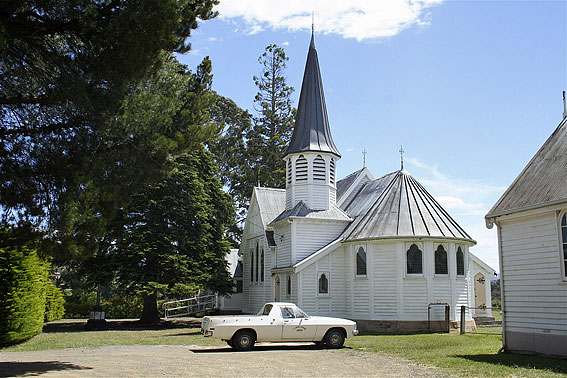
T4. Inlet Farm Huonville (1849) 65 Wilmot RD Huonville Hobart, TAS 7109
|
| ||||
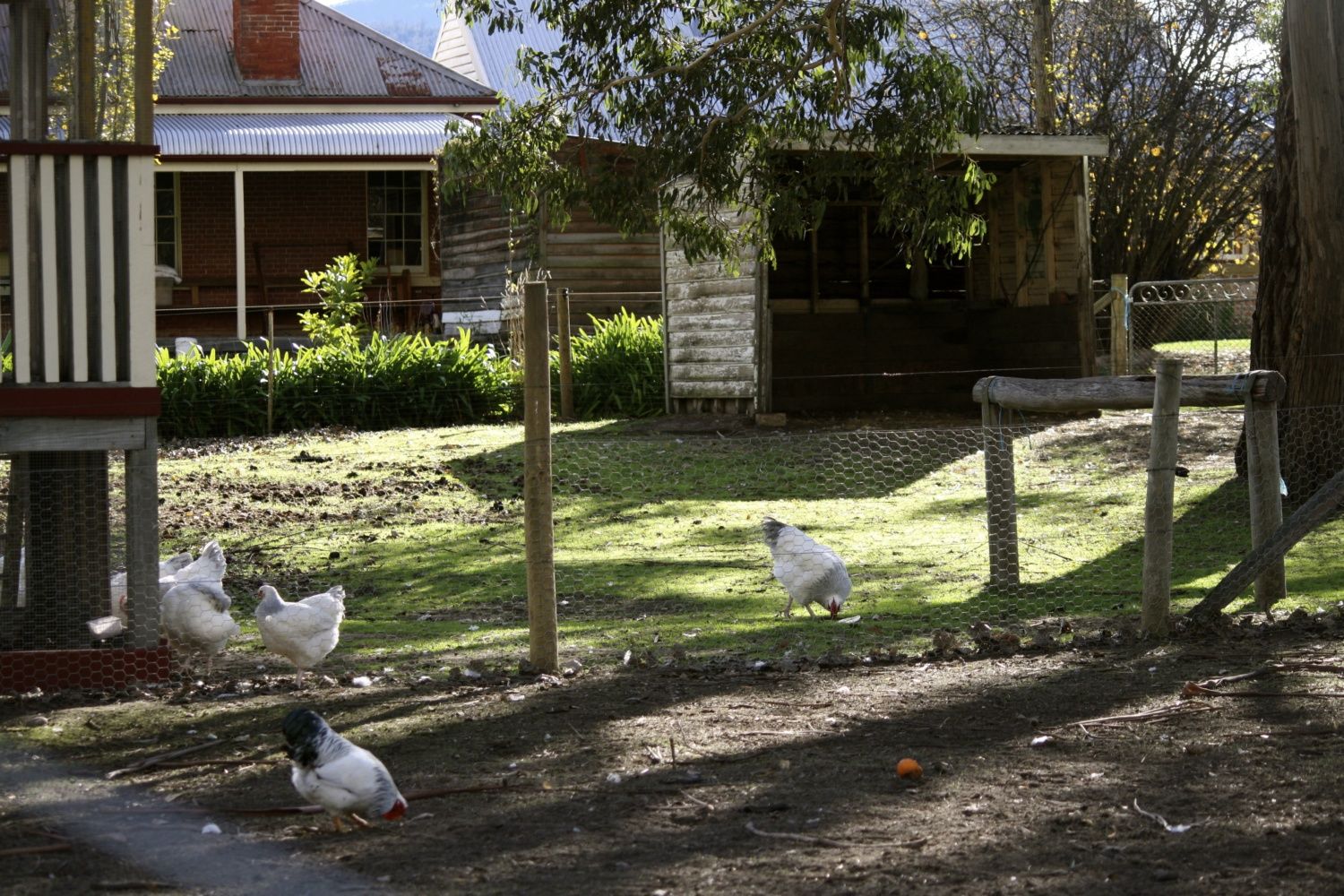 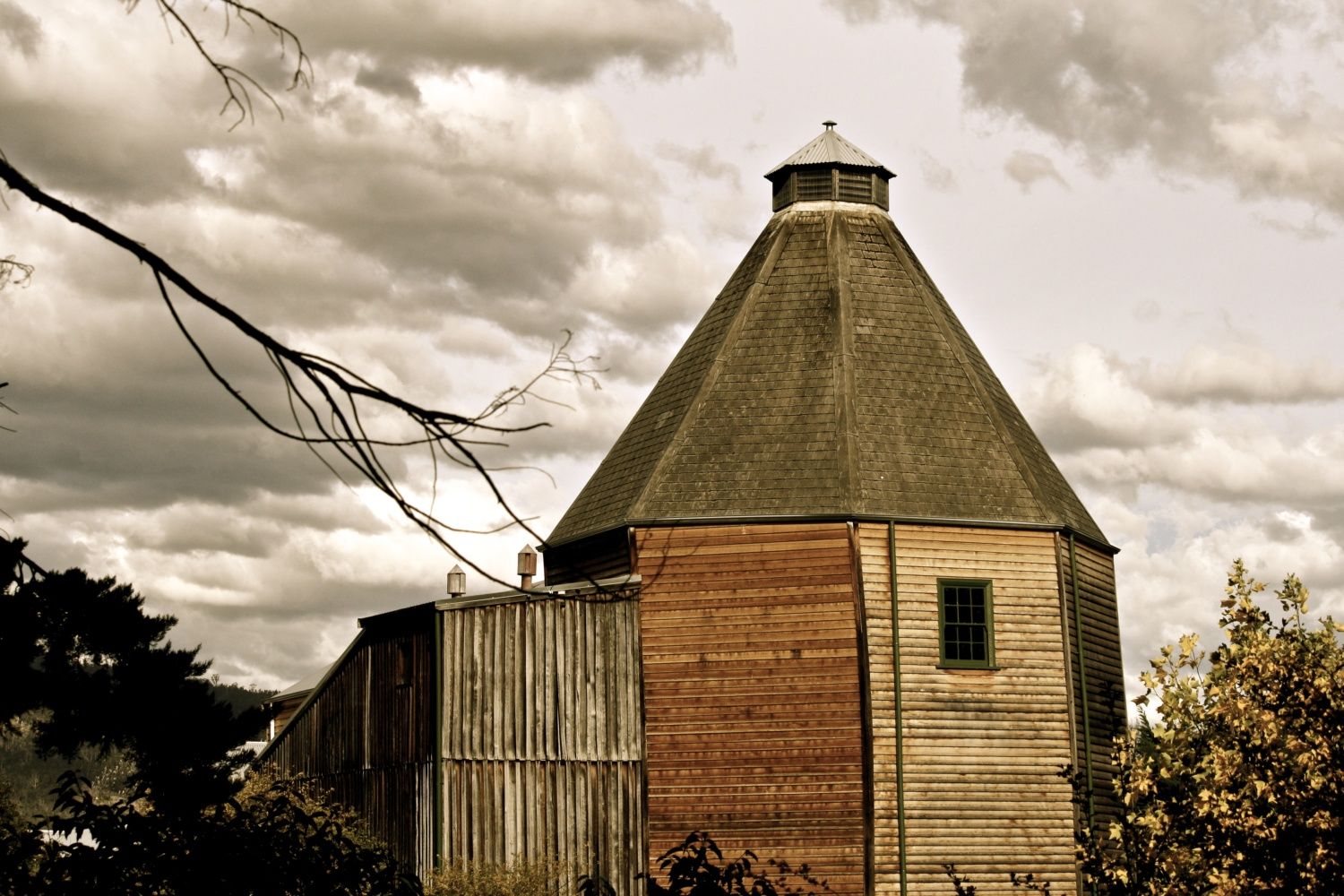 |   | ||||
| Inlet Farm. 1847; Hop Kiln | Coronation cottage and Old hop sheds |
- Registered
- Return to top of page
T5. Weatherboard dwelling, Huon Highway Franklin North
- (John Hay) 1861 Registered
Weatherboard dwellings, Huon Highway, Franklin North
T6. Weatherboard dwelling Huon Highway Franklin North
- (John Clark) c 1845, Registered
T7. St Mary's Anglican Church, Franklin


- (Site of Flour Mill) 1863 (J. Rait)
- St Johns Church has important associations with the early social and religious history of the Huon community. Early worship in the Franklin district was conducted in a small timber church, dedicated to St Mary, erected c1840, on land given by Lady Franklin. On 13 June 1855,
- Archdeacon Davies wrote to Bishop Nixon, emphasizing the urgent need for a new church in the growing township. Nixon sought assistance from the government, under the provision of the Church Act, 1837. The government had already committed its budgeted funds, however, and the request for government assistance appears to have lapsed.
- Following the ordination and appointment of the Reverend Thomas Stanfield, sufficient funds were raised publicly, and the foundation stone of the new building was laid on 9 February 1863 by Archdeacon Davies. Henry Hunter was appointed architect, and his original design included a nave, chancel, tower and spire. Only the nave and the base of the tower were completed initially. The contractor was John Rait, and the cost, 600 pounds.
- Read More: On the Convict Trail:St John's Church, Franklin
- Registered
T9. Methodist Church, Franklin
Once part of the heart of the community, the 1860 Methodist church overlooks the river and its black swans. Now the home of Riverflow Yoga and Accommodation, this Heritage listed stone church is enjoyed by visitors and locals, for bed & breakfast, shared wellness, or individual retreat.- Now known as: River Flow Yoga & Accommodation
 |  |  |  |
| The Old Methodist Church | Wooden boats on the Huon; | Huon River view; | Church from the lane |
- Registered
T10. Federal Hotel, Main Road Franklin TAS 7113
| Franklin Tavern |
The first Franklin Tavern began life in 1846 as a general store situated higher up on the hill. Licensee Elijah Brown decided to move the hotel closer to the road in 1853 – it became the Franklin Hotel and was later renamed the Federal Hotel.
In 1979 the present owner, Kon Reitler, purchased the hotel and undertook an extensive restoration program, changing the name to Franklin Tavern.
- 1860 (Henry Chesterman) Registered
T11. Franklin Lodge, 3448 Huon Highway, Franklin (as 'Brick Cottage')
Franklin Lodge is a Heritage Listed, Colonial, Bed and Breakfast found nestled in surrounding gardens in the Huon Valley.


Franklin Lodge” was originally constructed in 1850 in the bustling riverside community of Franklin, as a 6 bedroom 2 storey home which now features 4 bedrooms with ensuite, plus 2 other bedrooms & a 5th bathroom.
- All of the original features including open fire places, pressed tin ceilings, original doors, woodwork & ornate cornices are in place.
- Ornate fireplaces are scattered throughout the house & a large wood heater controls the temperature for the home.
- Formerly one of the premier B&Bs in the Huon Valley, this 6 bedroom 2 storey home features 4 rooms with ensuite, plus 2 other bedrooms and a 5th bathroom for owners use. Sale listing
 |
- The house is a an early stucco building with a Queen Anne Facade over it.
- An asymmetric, single storey, brick building with a corrugated iron hipped roof, boxed eaves, and corniced chimneys.
- There is a wing to one end of the front elevation, with a separate flying gabled roof. The gable has stucco and half-timbered infill, and below it is a faceted bay window.
- The door is central to the remainder of the front elevation, with a window to either side. The door has stained glass half-sidelights and transom light.
- Above the door is a gable-roofed, 4-centred dormer window, with gable infill to match the wing.
- All the windows are double-hung, with a 6-pane top sash and single pane lower sash.
- The verandah to the front and adjacent side elevation has a separate bullnosed roof, simple linear frieze and simple fretwork brackets.
- The outbuildings are weatherboard, with gabled corrugated iron roofs and decorative bargeboards.
- ARCHITECTURAL STYLE:- Federation Queen Anne
- 1865, Registered
T12. Roman Catholic Cemetery Franklin
T13. Walpole House, Walpole Road Franklin
- Now Riverview Cottage Bed and Breakfast at 3444 Huon Highway, Franklin, Tasmania 7113
- Situated at the Corner of Walpole lane
- (1850) Registered
T14. Valleyfield House, Glen Huon Road Franklin

- c 1860, Registered
- Return to top of page
2. Esperance Municipality

T15. Weatherboard Cottage, Huon Highway, Shipwright's Point, Port Huon
- Timber, hip roof and verandah
- 1850, Registered as Honeywood 4308 Huon Highway, Port Huon
Honeywood is of historic heritage significance because of its ability to demonstrate the principal characteristics of a single storey weatherboard Victorian Georgian domestic building. - Description: This is a weatherboard cottage with a central door, flanking double hung windows and hipped roof with narrow boxed eaves.
- The verandah on the street facade has hipped ends and single posts.
- There is a gabled roofed addition to the rear which is also of weatherboard construction.
- ARCHITECTURAL STYLE:- Victorian Georgian
T16. Stonehaven 44 Doodys Hill Road, Kermandie



- (Weatherboard House, Kermandie Estuary)
- (R. Hill), c 1860, Registered
- Sale listing with photographs
- The home has 3 bedrooms, the main with built in robe, there are Baltic pine ceilings throughout, the sitting room boasts dado board and there is pretty decorative borders in most rooms.
- ARCHITECTURAL STYLE:- Victorian Georgian;
Tasmanian Heritage Register listed #3533
T17. Congregational Church Huon Highway, Geeveston

A weatherboard Victorian Carpenter Gothic church building.
It is a single storey weatherboard church building with steeply pitched gabled roof, timber fretwork to the bargeboards, a large segmented pointed arch window and a bell spire.
- ARCHITECTURAL STYLE:- Victorian Carpenter Gothic
- 1885, Registered
T18. Sunday School, Geeveston
- (1855), Registered, Rear of above Church
T19. Cell Ruins, Station Road, Dover
- Registered
- Looks as though these ruins were recently removed from 5 Station Road, Dover, TAS
T20. Hope Island Ruins, Dover
- (1835) Registered
- Photo 1: Assistant Superintendent's Quarters December 10, 2015
- Photo 2: 'PWS heritage officer discusses the work with stonemason David Stone.'
- Photo 3: 'The Assistant Superintendent's Quarters on Hope Island off Dover.'
- Photo 4: 'From front to back: Ranger Ben Storer with stonemason David Stone and Malcolm McDonald rebuilding the western wall.'




Hope Island ruin gets some TLC
- Works are under way at Hope Island to stabilise an historically important ruin that was part of the former Hope Island Probation Station, which operated from 1844-1847. Hope Island is the largest of the three small islands a short distance from Dover; the others being Faith and Charity.
- The Hope Island Probation Station was an outstation of the Dover Probation Station. In 1847 there were 18 convicts on the island under an assistant superintendent; the men being primarily engaged in growing vegetables. Around 1848, shortly after abandonment of the probation station, the island was leased for private farming. By 1851 some of the buildings were already reported as falling in ruins.
- The Assistant Superintendent’s Quarters is the most prominent of the ruins on the island. It was a basic Georgian style cottage built from local field stone bonded with the rich red clay of the island. It was originally whitewashed and had a timber shingled roof. PWS rangers, field officers and heritage staff have recently been working with a local stonemason to stabilise the building by rebuilding the collapsed western wall.
Tasmania Parks and Wildlife Service
T21. Convict Brick Kiln, Esplanade, Stone Fences and Well, Dover
- Registered
 |
| Brick Kiln beach, Dover |
T22. Brick Cottage, Roaring Beach Road, Dover
- c1840, Registered
- Tas Heritage says this is at Southport
- Return to top of page
Southport
Australia's southernmost settlement |
| Southport local tourist information sign |
 |
| Southport now |
Located 104 km southwest of Hobart, Southport can claim to be the southernmost settlement in Australia.
- It can, however, hardly claim to be a settlement of much significance any more, a far cry from the early 1800's when it was Tasmania's second largest town and it was proposed as the capital of the colony.
Being Tasmania's second largest town at that time, it was proposed as the capital of the colony. Today, it is just a nice quiet spot to relax, go swimming, sail the calm waters of Southport Bay, walk on the beach or a little fishing.
- Where is it?: 104 km south west of Hobart, in the Huon Valley.
- Southport was the southern most probation station built right on the shore a few miles north of the whaling settlement of Recherche Bay.
| Southport probation station situated near the Southern entrance of the D'Entrecasteaux Channel, a few miles North of Recherche Bay. Hobart 60 miles distant, communication by water, reach Hobart easily in fair winds in one day. Originally opened for procuring timber, more recently reception of prisoners on primary probation. Station stands close to the shore, front parade rises supported by piles. Buildings generally of very tolerable description - paving for four feet around the huts so as to throw water draining from the roof's clear of the buildings foundations. Accommodation for about 500 men in the wards, and 30 in the separate apartments. Two mess rooms - one large and not in good repair, it is old and floor of loose earth. Cook house and bake house large and fair buildings made of wood with a brick wall around them. There are three yards quite distinct, one laid with good gravel and two with sand. Old huts built to accommodate 40 men each, front the station towards the sea, are very good, each hut quite distinct but sleeping places are narrow in some wards. Separate Apartments are in 4 small yards. Doors are placed alternately in one yard, or the other opposite in a manner similar to Cascades Female Factory in Hobart. Built of brick with a high brickwall around the yards.
|
Solitary cells not very well ventilated, but secure, sidewalls carried forward to prevent communication between inmates. 30 additional cells nearly completed. Hospital one large room, rather crowded and hot, eleven men were in it, Dispenser's room small. Very good Chapel divided by partitions, one part for officers and three divisions for the three distinct classes of prisoners. Books for circulating amongst men, kept in small room off chapel. Attendance at school tolerable but no great improvement reported. Resident Medical Officer visits the station at Port Esperance and an overseer who is Roman Catholic, reads prayers to men of his creed, about one third of all prisoners. Clerk in the office is a passholder at sixpence a day and rations. | ||||
| There are 361 prisoners on the station including 50-60 boys under twenty years, the youngest about 14 - these are kept in distinct gang from the men as much as possible during day and entirely separated at night from the men. All older classes of convicts have been removed, now solely those from the 'John Soames' and 'Lord Auckland'. Men separated as much as possible being distributed in three classes. 2nd and 3rd are mixed at work but as those of 3rd class are under separate treatment, all classes are kept distinct at night and meal times. | Supply of all description of timber is inexhaustible. Iron tram roads are laid in different directions so conveyance of timber to water's edge is performed without any difficulty. Abundant supply of shells for lime, and of good clay, also good stone for building and paving - all close at hand. [2] |
- ‘inspecting 130 of the greatest scoundrels in the world; young villains from sixteen to twenty-five years of age, and of the most incorrigible habits; they are sent down here to be as far as possible from the settled parts of the island. Eighty of these are in separate cells, but they are most difficult to manage; and I was obliged to hold out threats of enforcing the most severe system of separate confinement; and, in three or four instances, to carry out my threats” (Varieties of Vice Regal Life p 90.)[3]
- For the past fifty years it has consisted of shacks for families from Hobart and south, and home for a couple of farmers and few fishermen. Only a handful of houses have survivied, the most notable being The Jetty House, a heritage listed building built in 1875.
- In the nineteenth century Southport prospered as a port serving whalers, sealers and the local timber industry. There was a time when there were a number of substantial wharves and jetties dotted around the bay.
- Today Southport's only industries are tourism and fishing.
- 1830-1840, Registered
T24. The Big House, Huon Highway, Southport (Jetty House)
 |
| The Jetty House, Southport |
- The Jetty House (1876) (Joseph Graves) Registered
- Website: http://www.southportjettyhouse.com/ and alsohttps://www.airbnb.com.au/rooms/1653374
- The Jetty House is an historic home situated by the bay in tiny Southport, south of Hobart. Travelling time is a 90-minute drive from the capital.
- Jetty House has six standard rooms with three bathrooms, accommodating up to 12 guests.
They have been operating as a popular traditional B&B for 16 years.
Facilities include two separate lounges with open fireplaces and a selection of games and books as well as wide shady verandas and a barbecue shelter.- The house is set in two and a half acres of lush gardens. Settlement Creek runs through the grounds and the property is located opposite Southport Beach




- Built by Joseph Graves who started the steam-driven timber mill in Southport (a technophile- up until then timber was milled by convicts in pits)
It is now a comfortable, rambling home set in lovely gardens next to a beautiful white sand beach. - The Jetty House has 7 rooms, 3 bathrooms, 3 lounge areas, a well-equipped kitchen with full-sized stove, dishwasher and coffee machine.
- Outside there are wraparound verandas, extensive gardens and a bbq gazebo.
- Across the road is Southport Beach with beautiful white sand and safe swimming.
- Travellers' photo gallery
T25. Convict Farm, blue gum avenue, graveyard, Lady Bay Road, Southport
- Registered
Streetview_Convict Farm, blue gum avenue, graveyard, Lady Bay Road, Southport - Return to top of page
T26. Hastings Caves, Hot Springs, Lune River
- Registered
 |  |
- Named after Sir Francis Newdegate, the Governor of Tasmania from 1917-1920, Newdegate Cave is the largest tourist cave in Australia which occurs in dolomite, rather than limestone. Adamson s Falls and Adamson s Peak, the Mystery Creek Caves are accessed from Hastings.
T27. Limestone Quarries, Cockle Creek, Lune River
|
|
- Registered
- Located on the eastern outskirts of the Southwest National Park, near the Ida Bay Railway, the Mystery Creek Caves track is a unique walking experience combining railroad and mining history with accessible and stimulating caving experiences.
- Originally constructed as a tramway to facilitate a limestone quarry, the trail is mostly flat and easily managed by walkers of all levels.
- The trail begins at the information shelter adjacent to the carpark and follows the muddy tramway track through spectacular dense forest for the first 1km. Keep an eye out of the many mining and rail relics that litter the edges of the trail as you meander your way through the forest.
The quarry is soon reached and the trail continues along the lefthand side of the quarry face.
Discovery
On September 28th 1791 two ships sailed from Brest. Significantly renamed Recherche and Esprance they represented the hopes and aspirations of an emerging new revolutionary order.- France was experiencing a time of great change. King Louis XVI and his family were no longer autocratic rulers and amore egalitarian Constituent Assembly was in place. Several years before Comte de La Prouse had led an expedition of exploration and scientific research into the Pacific. By 1791 he hadn't been heard of for three years not since sending dispatches home from Botany Bay.
- In response to this an expedition was mounted under the command of Rear Admiral Bruni d'Entrecasteaux to discover the fate of La Prouse and to engage in scientific study in the South Pacific. He chose his close friend and fellow officer, Huon de Kermadec to command the Esprance.
- Some of the best French scientists applied to join the Expedition, no expense was spared in outfitting the ships and every crew member was deliberately chosen to ensure a successful voyage. By and large most of the officers were Royalists and most of the scientists were Republicans, reflecting the current political trend in France.
D'Entrecasteaux decided to make for the one safe harbour shown on the charts left by Captains Cook and Bligh, Adventure Bay in southern Van Diemen's Land.Top of Ironbound Ranges looking toward Louisa Bay and beyond - Battered by unrelenting storms the two bedraggled vessels sighted the coast on Van Diemen's Land on the 21 st of April, 1792.
- Due to a navigational error, 19 west instead of 19 East the ships found themselves outside the entrance to a large harbour. Concerned over unfavourable winds and nearby threatening reefs d'Entrecasteaux sent long boats ahead into the bay to do soundings while the two ships tacked for two hours across the entrance. At 4:50 the Admiral signaled 'anchors down' and the weary crew complied.
- But where were they?
 |
| Southwest National Park is the heart of the Tasmanian Wilderness World Heritage Area. |
- "...Trees of an immense height and proportionate diameter, their branchless trunks covered with evergreen foliage, some looking as old as the world;
- "...Nature in all her vigour, and yet in a state of decay, seems to offer to the imagination something more picturesque and more imposing than the sight of this same nature bedecked by the hand of civilised man.
- "Wishing only to preserve her beauties we destroy her charm, we rob her of that power which is hers alone, the secret of preserving in eternal age eternal youth."
- Return to top of page
Recherche Bay
A quiet, idyllic bay in the far south of Tasmania beyond the Huon Valley.- The original inhabitants of this area were the Aboriginal people known as the Lyluequonny. Their first encounter with Europeans was with the French, an amicable meeting which could be considered a ‘cultural exchange’. The French expeditions were focused on the scientific study of native flora, fauna, geology and the waterways of Van Diemen’s Land.
- Recherche Bay itself, sheltered from the wildest weather, provided some safe harbour for the influx of early settlers, sealers and convicts. Early industries based initially on coal-mining and whaling became established.
- Coal was sent to Hobart and the oil produced from whales helped the emerging colony with lighting, cooking and the manufacture of soaps and corsets. The bronze whale sculpture that presently sits at Adams Point pays homage to this history.
- One of the features of this somewhat sheltered coastline was that tall forest eucalypts grew close to the shore, making for convenient, though still dangerous, harvesting. Timber was not only required for the local collieries and boat building, but for housing and domestic needs.
- A number of mills were established around the bay over time, with one mill at Cockle Creek run by women during World War II. Tram tracks spread out into the bush to retrieve logs from the hinterland.
- In Recherche Bay during the early part of the 20th century, it appears that the men fished, farmed, worked the mines, the timber mills & were grateful for road making work when it was offered. Some 3000 people lived in the area at the time.
|
|
- Recherche Bay is a natural area in the south-eastern corner of Tasmania.
- The terrestrial area is dominated by mixed aged tall and dry Eucalyptus obliqua forest with a history of forest harvesting. Beneath the variable E. obliqua canopy, the understorey consists of a sedge and shrub layer and is made up of species typical of the surrounding area.
- The ground layer consists mainly of cutting grass (Gahnia grandis) and bracken (Pteridium aquilinum) whilst the shrub layer contains species such as prickly moses (Acacia verticillata) and silver banksia (B. marginata). Parts of the area include reasonably extensive coastal wetlands dominated by sedges and other plants.
- In 1792 D`Entrecasteaux`s expedition sailed up the channel, now bearing his name, charting the coastline & naming features.
- He named the large bay at the top of the channel, North West Bay. The expedition anchored there to collect fresh water. Many aborigines were observed in the area.
- The Tasmanian Aboriginal community has a strong association with the place that is of outstanding significance to the nation because Recherche Bay is associated with the best documentary evidence of Aboriginal culture before European settlement.
- There are a three small settlements on Recherche Bay Catamaran, Recherche Bay and Cockle Creek. These are the most southern communities in Australia.
- A signpost at Cockle Creek marks the most southerly point in Australia accessible by motor vehicle.
- The southern tip of Tasmania, Australia s southern extremity, which marks the beginning of the South West Walk, is just an hour s walk away.
- Where is it?: 80 km south of Southport.
- Coal found on North Point by D Entrecasteaux was mined by a team of 43 convicts from 1841 to 1848.
- Mining was abandoned because of seepage in its two shafts due to the mine being so close to sea level.
- National Heritage ListRecord #105665
T28. Whaler's Hotel, Fisher's Point, Recherche Bay
- Registered
Fisher Point pub, 2006
T29. Exit Cave, D'Entrecasteaux River, Recherche Bay
- Registered (originally termed "East Cave"}
- Largest and longest limestone cave in Australia.
Exit Cave is a large, multi-entrance system in Southern Tasmania. It is arguably the longest cave system in Australia. Read more: Exit Cave
D'Entrecasteaux Passage, Exit Cave. Jonathan Esling photograph
D’Entrecasteaux Passage, Exit Cave. - Register of the National EstateRecord Identifier: 11921
T30. Site of Bay Whaler's Fry Pots, Catamaran Point, Recherche Bay
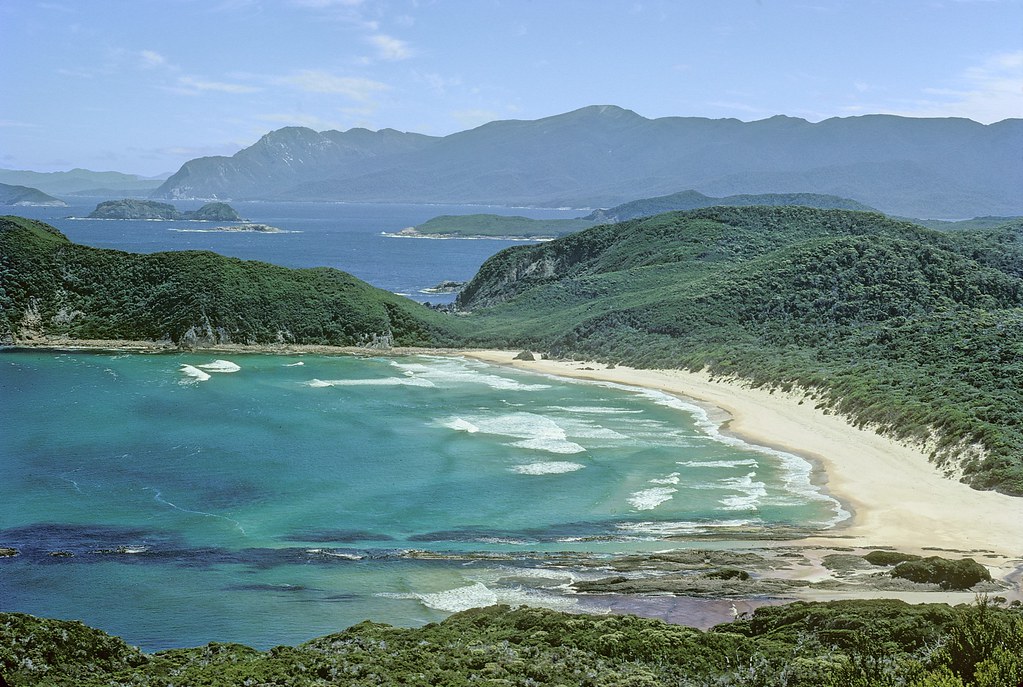 |
| Surprise Bay, South Coast Track |
| Catamaran Point, Recherche Bay |
- Registered
- Between the late 1830s and early 1840s, four shore-based whaling stations operated in the bays immediately to the north of Southport Bluff. The remains of three of these stations have been identified.
- Captain William Fisher was born in Hobart 1813, son of an emancipated convict. He soon acquired the brig Calypso (157 tons) & pursued whaling and other interests, not always within the law.
- An 1869 news report claimed he had 12,000 antiscorbutic cabbages growing.
- He is remembered by Fisher‘s Point at the southern end of Recherche Bay (where the road ends) marked by a life sized bronze whale sculpture nearby.
 |  |
T31. The Waterhole, D'Entrecasteaux Watering Point, Recherche Bay
- Registered
- It is the site of the first botanical collecting in Tasmania by Bruni D'Entrecasteaux's 1792 expedition, and all the plants described then are still to be found in the Southport area, including the Tasmanian bluegum Eucalyptus globulus, the floral emblem of Tasmania.
- In the autumn of 1792 a pair of storm-battered French ships, their crews weatherbeaten and tired, dropped grateful anchor in waters off Tasmania’s south-east coast.
- The peaceful waterway was later named D’Entrecasteaux Channel and the kidney-shaped bay they chose for their rest and repair became known as Recherche Bay.
|
|
- The historic place comprises the northern headland of Recherche Bay incorporating the camping and operational sites of the expedition (including the garden site, observatory, boat repair site and related work areas, and crew camping area).

Ian Hansen, The Lyluequonny People Farewell D'Entrecasteax's Ships - Over the next 26, days the Bay saw much activity. The ships were careened, timber was cut for repairs and the making of charcoal.
- The botanists Labillardire, Riche and Ventenat busily collected, catalogued and preserved hundreds of hitherto unknown flora and fauna including the Eucalyptus Globulus, Tasmanian Blue gum which later on became the state emblem.
- Hydrographers Beautemps-Beaupr, Willaumez and others set of in the long boats to chart previously unknown parts of the coast. Their maps were used for generations by other mariners.
- Rossel set up an observatory on what is now Bennett's Point and discovered Geo-magnetism od great significance to navigational science. An event commemorated by the unveiling of a plaque on the site by the CSIRO during a seminar held in Hobart in 1992.
"Under calm conditions the following morning both vessels were safely towed by invigorated oarsmen into the bay. They anchored in the northern sector, later termed the Port du Nord, or ‘little bay’, today the unimaginative Pig Sties Bay. They moored over 100 metres from the beach north of Bennetts Point; Recherche lay some 70 metres north of Espérance.
Gazing at this pristine landscape, Labillardière voiced the ethos of noble nature: ‘We were filled with admiration at the sight of these ancient forests, in which the sound of the axe had never been heard.’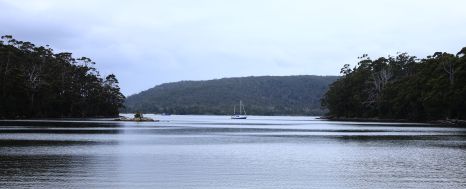
Recherche Bay - Turning his eyes towards the harbour, he exclaimed with exaggerated praise that ‘more than 100 vessels of the line might ride here with safety’.
- D’Entrecasteaux felt equally emotional: ‘With every step, one encounters the beauties of unspoilt nature … trees reaching a very great height … are devoid of branches along the trunk, but crowned with an everlasting green foliage. Some of these trees seem as ancient as the world’.
- Matthew Flinders paid him an unreserved compliment, when he praised the discovery of this harbour as ‘the most important discovery which has been made in [Tasmania] from the time of Tasman’.
- Return to top of page
Cockle Creek
Cockle Creek is a tiny settlement in Tasmania, the farthest point south one can drive in Australia,[1] 148 km from Hobart via the Huon Highway. It is located on Recherche Bay on the edge of the Southwest National Park, part of the Tasmanian Wilderness World Heritage Area.[1]- During the 24 days spent moored in the harbour, 200 men were set to work as ships and shore became a hive of activity. It was a welcome break from shipboard routine, although a busy one as most of the crews worked ashore. Before describing the scientific research, it is appropriate to note these various activities, many of which must have left archaeological traces on land or seabed.
- The example of the preservation of the James Craig over a century later, is a reminder that archaeological evidence of this visit may be preserved in the mud and sand. D’Entrecasteaux provided testimony to the constitution of the seabed when they had difficulty in raising an anchor which was ‘too deeply buried in the mire’. ‘With this type of seafloor,’ he concluded, ‘where the anchors sink to the point of disappearing, it is necessary to raise the anchor frequently.’[4]
|  | ||||
|
| ||||
|  |
T32. Cockle Creek Cemetery, Recherche Bay
|
| ||||
|
| ||||
|
|
- Registered
- Return to top of page
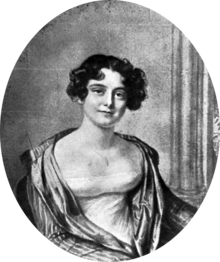






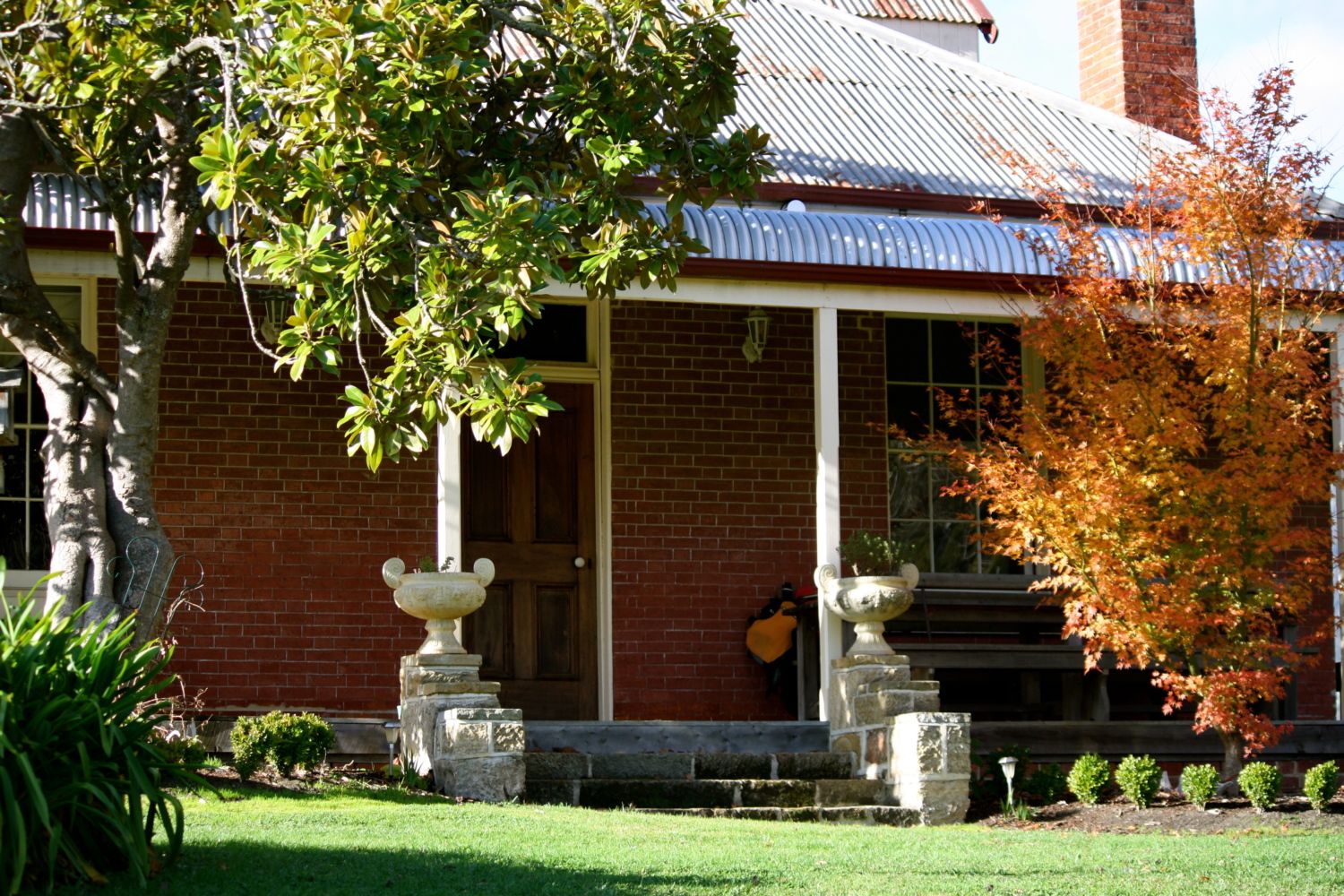














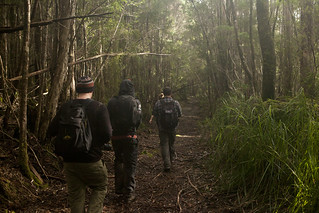



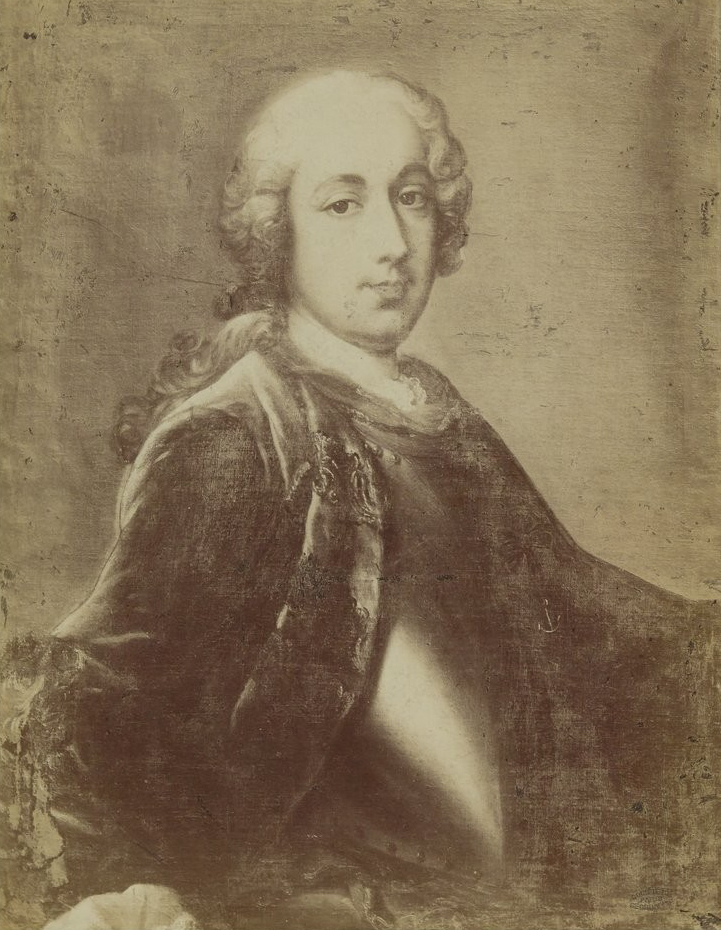
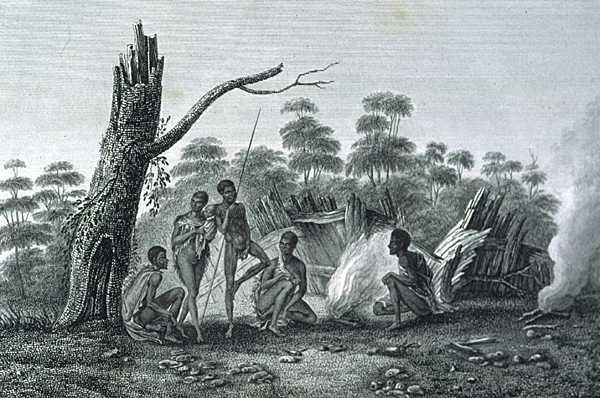













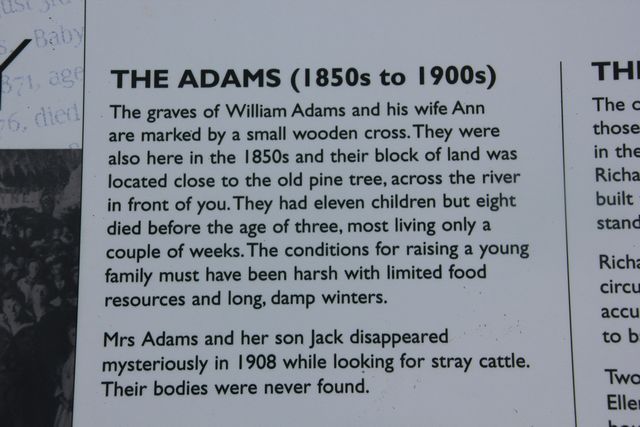

No comments:
Post a Comment